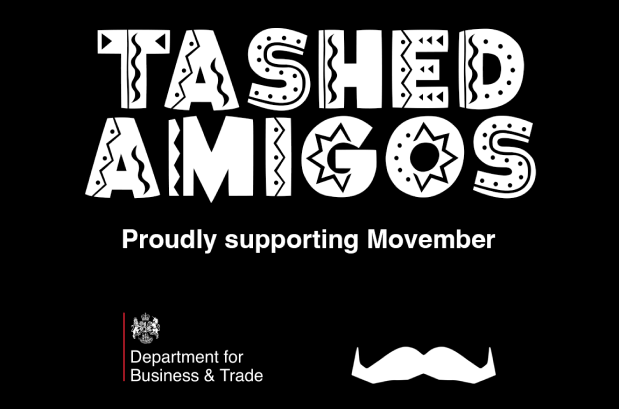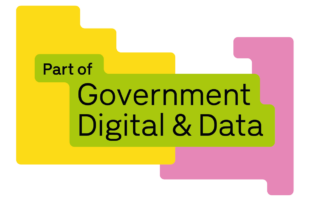
 Which part of the Digital, Data and Technology (DDaT) directorate do you work in?
Which part of the Digital, Data and Technology (DDaT) directorate do you work in?
I work with Data Hub, a self-built customer relationship management system (CRM). As a Senior Interaction Designer, I develop design concepts across complex GOV.UK services based on the evidence of user needs.
What is Movember and why did you decide to take part in it?
Movember is an annual event involving the growing of moustaches during the month of November. This is to raise awareness of men's health issues, such as prostate cancer, testicular cancer, and men's suicide. I chose to participate, as I have been affected personally through the loss of family members and friends. I also resonated with the approach of using humour to help humanise a taboo topic people often shy away from.
What did you do and how did it go?
Laura Wood, Ieuan Parker and I all signed up to Movember. For those who cannot grow a moustache, there were fundraising activities like running certain distances over the month. During Movember, we have:
- raised £540
- walked or run 544km
- created a dedicated fundraising page: https://tinyurl.com/movember2023
- designed a shareable daily series of ‘Hall of Furry Fame’ graphics featuring well-known celebrities who have moustaches
- rewarded supporters with a secret MS Teams channel which is regularly updated showing our moustache growth and activity progress.
How would you define the culture within DBT and DDaT?
The DBT culture is the set of beliefs and customs that guide us as employees including ethics, values, goals, and attitudes. These affect every part of our work within the department, from interpersonal relationships to the end results that stakeholders see.
I felt a shared synergy in values between Movember as an organisation and DBT, making the challenge a perfect fit.
DBT’s values are based on being:
- Excellent
- Connected
- Confident
- Collaborative.
Movember’s values are:
- Change agent: We challenge, learn, adapt to lead extraordinary change
- Better together: We believe in the value of one and the power of many
- Accountable: We are aligned, transparent and take ownership
- Fun: We have fun, doin’ good
- Courageously kind: We are respectful and inclusive, always
- Remarkable: We strive to be better and different and to exceed expectations.
What are some other examples of DBT’s culture?
Some more examples of DDaT and DBT culture can be found in:
- Shout-outs during our weekly directorate get togethers — This simple gesture recognises our peers for their work and talent. It contributes to a culture of appreciation, community, and kindness.
- DBT Fantasy Football League — In its second year, the game now has 29 people taking part from throughout the organisation. They actively participate all hoping to win the esteemed title of Champion with a physical trophy being presented at the end of the season. The game fosters communication and confidence. It sees people from different professions and grades within DBT come together, forming a bond through a shared love of the beautiful game.
- Design Community Hour — A fortnightly event in which like-minded individuals get together to discuss design, ask for feedback and share knowledge.
- Communities of Practice — Organised groups where the User-Centred Design community (UCD) can request design critiques and help, showcase work and learn about new tools.
There is also DDaT Fest which is an all-team in-person away day. It demonstrates our culture through letting staff lead on session topics in an unconference style. This encourages participation and collaboration amongst teams and creates a unique bonding experience. DDaT Fest also maximises networking opportunities, giving staff the opportunity to build new relationships and strengthen existing ones.
What outcomes does working in a culture like this give?
Having a shared positive culture makes for a more enjoyable workplace with increased productivity and reduces staff turnover and absenteeism. It leads to improved learning and health, increased tolerance, and opportunities to come together with others. A good culture at work can enhance quality of life and increase overall well-being. It also plays an important factor for people deciding where they want to work in the future.
Ready to join the team? Check out our latest DDaT jobs on Jobvite.

